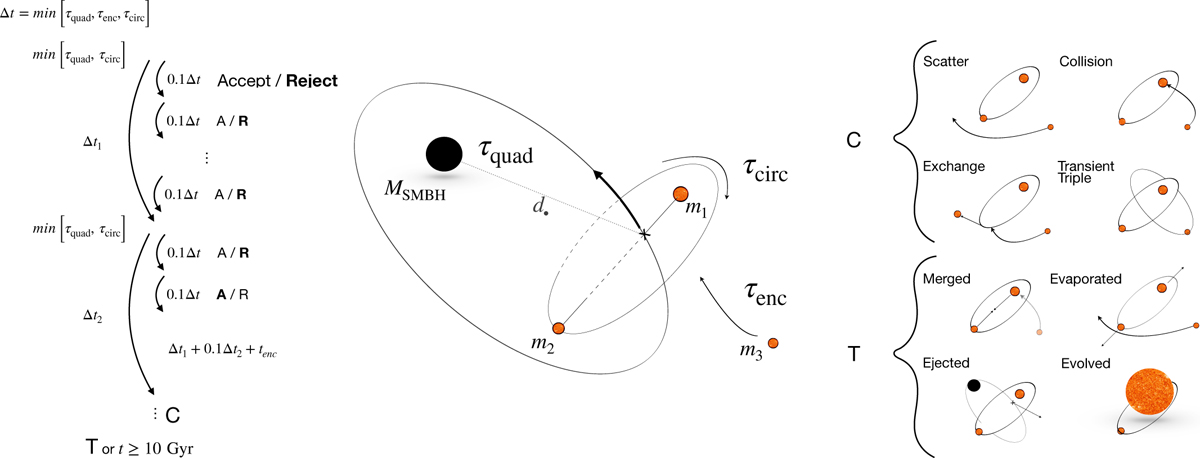Fig. 2

Download original image
Flow chart of our routine described in Section 3.2.3. The central sketch shows the overall setup of the three-body encounters; a binary (m1, m2) on an orbit at a distance of d• around the SMBH (MSMBH) interacting with a tertiary (m3). To the right of this sketch we show the possible outcomes from a three-body interaction. Group C contains interactions in which the binary remains intact and bound to the SMBH and as a consequence will experience continued evolution. Conversely, the evolution is terminated by outcomes in group T. To the left of the sketch we illustrate how a binary is evolved. A timestep, ∆t, is set by the shortest timescale of ZLK (quadrupole approximation), encounters, and circularisation (tides). The secular process with the shortest timescale min[τquad, τcirc] is then run for ∆t. At every step 0.1 ∆t, a three-body encounter is sampled with the accept-reject method described in Appendix A. If accepted, the three-body encounter is carried out with tsunami. If rejected, we proceed to the next 0.1 ∆t and sample again. After a time, ∆t, has passed or after a three-body encounter, a new ∆t is calculated. In this example, the encounter occurs after ∆t1 + 0.1 ∆t2 + tenc. This process is then continued until an outcome in group T occurs or until the simulation time exceeds 10 Gyr.
Current usage metrics show cumulative count of Article Views (full-text article views including HTML views, PDF and ePub downloads, according to the available data) and Abstracts Views on Vision4Press platform.
Data correspond to usage on the plateform after 2015. The current usage metrics is available 48-96 hours after online publication and is updated daily on week days.
Initial download of the metrics may take a while.


